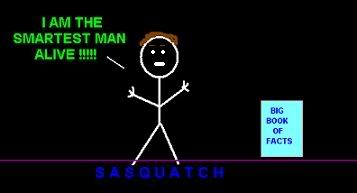There is no one way that restorative processes should be delivered. Instead, the essence of restorative justice is not the adoption of one form rather than another; it is the adoption of any form which reflects restorative values and which aims to achieve restorative processes, outcomes and objectives. Admittedly, this is nowhere near as clear-cut as the 'find-someone-guilty-and-put-them-in-a-room' system, but when that system doesn't actually do anything, then a new approach is needed. Restorative justice is one of these.
I concur, something new needs done. I just don't think this restorative thing is it.
Check out section 3 in this
Wikipedia article for an example of the process. I've skimmed the section, and it's alright. If you want a more authoritative source, try
this, or just look for it yourself.
Will do.
I don't believe that. It's a very pessimistic way of viewing people, especially a thief. I mean, that dude wouldn't even see prison in New Zealand (murderers get about six years maximum).
Wait, WHAT? Six years for killing another human being? How is someone meant to realise the gravity of what they did when all that is taken from them is six years of their life?
As stated, laws are just a codified system of what we see as being wrong. We see it as wrong to steal, clearly. But is a crime committed against the state, or against the concerned individuals?
It's committed against people, clearly, and the state exists to defend those people. That's why courts were, like, created and stuff.
Restorative justice sees it as committed against the individuals.
So does normal justice. The law is a series of bits of paper which set out the rights of individuals. Violate the person, you're violating the bit of paper.
Instead of incarceration, this criminal should be made to meet the people s/he stole from, hear their side of the story (how it has affected them practically and mentally),
That's what happens in a courtroom. The accused sits there while the victims explain what happened, and why they're not happy/utterly destroyed about it.
and the offender themself has to be involved in remedying this. Is this 'asshole' still a thief, when s/he has spoken to those s/he has offended against, repaired the damage to whatever extent is possible, the underlying causes of the theft have been addressed (e.g. drug addiction), and the criminal fully comprehends the nature of what they did?
Well, no, they've made up all nice. But can you force someone to do that? What if Hypothetical Thief is all, 'Yeah, I stole their kettle, and I don't care. And their food mixer. What you gonna do?'
In the case of a more serious crime, it is going to be near impossible to fully repair the damage of the crime (you can't bring back a victim of murder), but why do we need to upset another life to get revenge?
Because you can't just let them off with it?
If the person is likely to re-offend (possibly they are mentally ill), then a case for long-term incarceration is justified, but all the above procedures can still take place, and once feelings have been brought down, a solution devised between the criminal and those offended against may be made.
Love your use of the word 'feelings'.
With a great deal of difficulty, but it's indeed possible.
You need only suggest that a new person on the street is on the Sex Offender's Register and the street population will use eggs, crowbars, and whatever else to make sure that guy is gone ASAP. That's just suggestion. I'm not saying it's right, but it's the way people are.
The offender can return what was stolen (or do something to that effect), explain their motive, attempts can be made for the offender to comprehend the impact of their crime, etc. I am reluctant to give you some '12-step process' because it does not exist. Each case is different. A minority of cases are not fit for restorative justice in a definite sense, but the principles can be incorporated in any decision.
Deterrent? How about addressing recidivism and the underlying causes of crime, such as poverty and racism?
Because a lot of crime has nothing to do with poverty and racism? Attack the underlying causes and incidence goes down, yes, but there will always be plain ol' psychos, and also people who think, 'They have, I want, will get.' Or 'That asshole slept with my wife'. Or 'He got drunk and stabbed my brother'. And so on.
'Violating human relationships' is the same as 'breaking the law'.
Exactly. They're not as seperate as you keep making out.
There is always a consequence. Prison or the death sentence is not an effective consequence because it considers crime to be an affront to some impersonal concept known as the 'law', and doesn't recognise the personal harm.
Yes, it does. They are in prison because they pissed someone off, and then that person remember that the law exists, and took them down using it. You never heard of victims' counselling? Prisoners can get it too.
The state makes laws which are based on violations against human relationships. Perhaps it's a little postmodernist, but that is what the law is. We've created some fallacy where a crime is an offense against words on a bit of paper, not against people.
Sentence one contradicts sentence two, here. If the law is based on human violations, then crime under the law means exactly the same as it does under the idea we're talking about.
And there are many things I disagree with John Locke on (not all). There's one buried in my signature. I may get round to making a thread where I explain them.
Neat.

























Bookmarks